
Warrant Officer Basic Course
UNITED STATES MARINE CORPS
THE BASIC SCHOOL
MARINE CORPS TRAINING COMMAND
CAMP BARRETT, VIRGINIA 22134-5019
JUDGE ADVOCATE
GENERAL MANUAL
W4K0007XQ
STUDENT HANDOUT
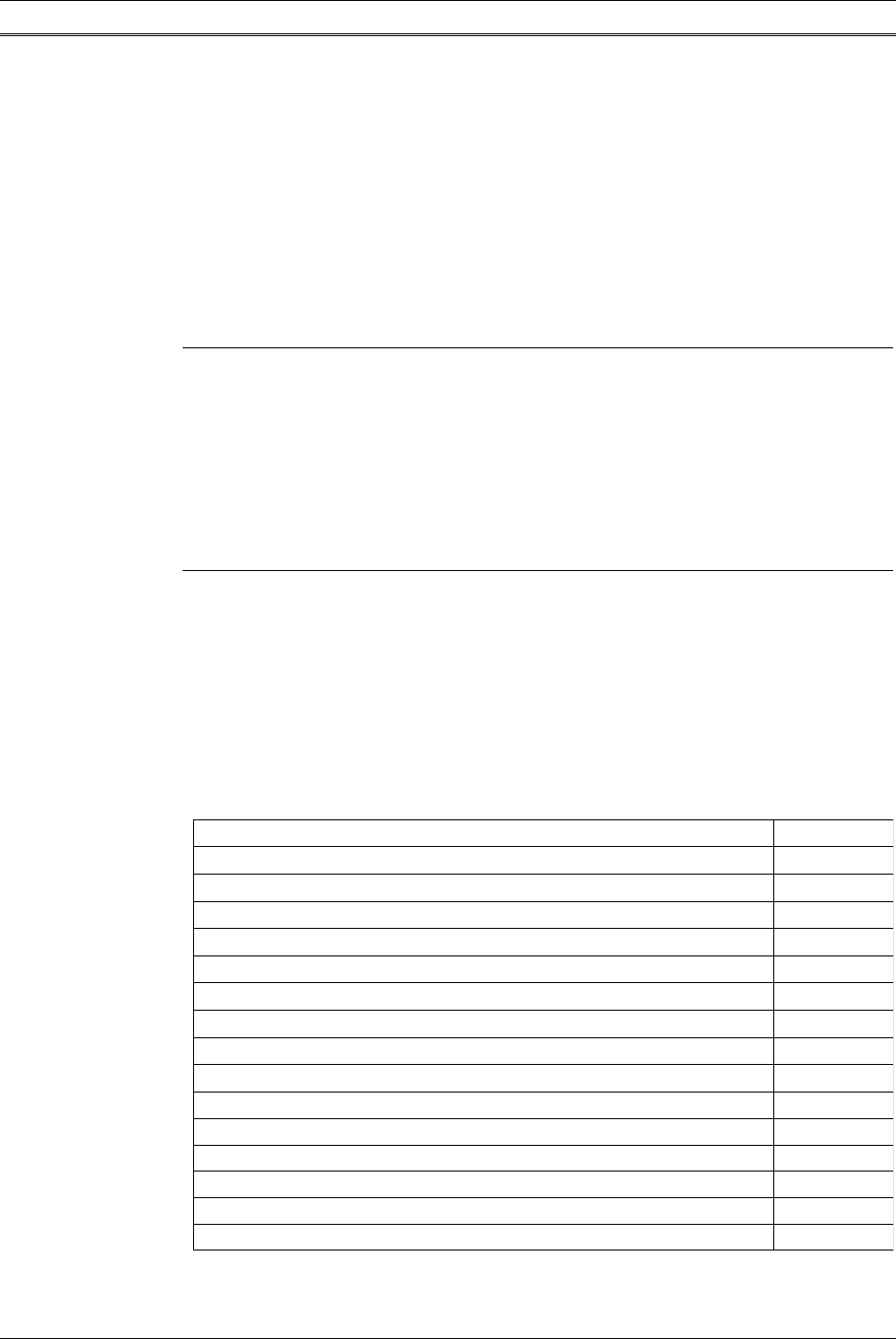
W4K0007XQ Judge Advocate General Manual
2 Warrant Officer Basic Course
Judge Advocate General Manual
Introduction
Almost every Marine officer will have contact with an administrative
investigation (commonly referred to as a “JAGMAN” investigation)
during their military career, either as an investigating officer or as a
convening authority. The basic regulations governing such
investigations are contained in the Manual of the Judge Advocate
General (JAGMAN). The primary purpose of an administrative
investigation is to provide the convening and reviewing authorities
with information regarding a specific incident which occurs in the
Marine Corps. These officials will then be able to make informed
decisions and take appropriate action based upon the complete
information contained within the investigative report.
Importance
The importance of JAGMAN investigations cannot be overstated.
They provide a Convening Authority with the information necessary
to make critical decisions within their command. These decisions
affect safety, discipline, morale, and the overall unit effectiveness of
an organization. Your ability, as an officer to effectively
communicate to your Commanding Officer the facts of a situation,
while providing coherent and succinct opinions and
recommendations will identify you as a standout among your peers.
In This Lesson
In this lesson, you will learn the purpose, scope and format of a
preliminary inquiry (PI), a Command Investigation (CI), and a
Litigation-Report Investigation. We will discuss how to make a
proper Line of Duty/Misconduct determination when conducting an
investigation. You will also learn special considerations in death
case investigations, and proper Article 31(b) rights advisements.
Finally, we will review the proper routing and endorsements of
investigations.
This lesson covers the following topics:
Topic
Page
Learning Objectives
3
Preliminary Inquiry
4
Command Investigation
5
Litigation-Report Investigation
6
Line of Duty/Misconduct Determination
8
Special Considerations in Death Cases
11
Handling Witnesses
13
Summary
13
References
14
Glossary
14
Notes
14
Appendix A: Preliminary Inquiry
15
Appendix B: Command Investigation
17
Appendix C: Litigation-Report Investigation
26
Appendix D: Line of Duty / Misconduct Determination
35

W4K0007XQ Judge Advocate General Manual
3 Warrant Officer Basic Course
Learning Objectives
Terminal Learning Objectives:
TBS-UCMJ-2309 Given a scenario with the aid of the JAGMAN, determine how to
conduct a Command Investigation in accordance with JAGINST 5800.7_ Manual of
Judge Advocate General (JAGMAN).
TBS-UCMJ-2308 Given a scenario with the aid of the JAGMAN, determine how to
conduct a Judge Advocate General Manual(JAGMAN) Investigation without omission in
accordance with the JAGMAN.
TBS-UCMJ-2307 Given a scenario with the aid of the JAGMAN, determine how to
conduct a Preliminary Inquiry without omission in accordance with the JAGMAN.
Enabling Learning Objectives:
TBS-UCMJ-2307a Given an evaluation, define the term appointing authority without
error.
TBS-UCMJ-2307b Given an evaluation, define the term preliminary inquiry without
error.
TBS-UCMJ-2307c Given an evaluation, identify chapters of the JAGMAN without
omission.
TBS-UCMJ-2307d Given an evaluation, define the term command investigation without
omission.
TBS-UCMJ-2307e Given an evaluation, identify characteristics of a line of duty
misconduct investigation/determination without error.
TBS-UCMJ-2309a Given a set of facts, identify components of a preliminary statement
in accordance with JAG INSTRUCTION 5800.7F.
TBS-UCMJ-2309b Given an evaluation, define the findings of fact section in
accordance with JAG INSTRUCTION 5800.7F.
TBS-UCMJ-2309c Given the findings of facts, determine the opinion section in
accordance with JAG INSTRUCTION 5800.7F.
TBS-UCMJ-2309d Given the opinions section, determine the recommendations section
in accordance with JAG INSTRUCTION 5800.7F.

W4K0007XQ Judge Advocate General Manual
4 Warrant Officer Basic Course
Preliminary Inquiry
The preliminary inquiry (PI) is a quick and informal investigative tool that can be used to
determine initially whether a particular incident is serious enough to warrant some form
of JAGMAN investigation. A PI is not necessarily required, however, it is an advisory
first step for commanders for all incidents potentially warranting an investigation.
Method of inquiry. The convening authority (CA) may conduct a PI personally or
appoint a member of the command to do so. There are no requirements nor restrictions
governing how the inquiry is to be accomplished. The goal is to take a "quick look" at a
particular incident (e.g., a minor fender-bender), and gather enough information so that
an informed decision can be made regarding whether some sort of JAGMAN
investigation is truly necessary. Generally, the PI should not take any longer than three
(3) working days. If more time is required, it means that the inquiry officer is attempting
to do too much or has not been sufficiently instructed as to what issue(s) is to be
addressed. Upon completion of the PI, a report is tendered to the CA. The PI report
need not be in writing, but some form of limited documentation is advisable. JAGMAN
0204.
Command options. Upon reviewing the results of the PI, the CA should take one of
the following actions:
1. Take no further action. Where further investigation would serve no useful purpose,
there is no need to convene a JAGMAN investigation. This is an appropriate
course where the PI reveals that the incident is likely to be of little interest to
anyone outside the immediate command or that the event will be adequately
investigated under some other procedure (e.g., NCIS investigation, MLSR/survey
procedure, etc.). JAGMAN 0205a(2)(a), 0207. As a matter of practice,
documentation of the PI and the command decision is advisable.
2. Conduct a command investigation. JAGMAN 0205a(2)(b).
3. Convene a litigation-report investigation. Consultation with the "cognizant judge
advocate" is required. JAGMAN 0205a(2)(c).
4. Convene a court or board of inquiry. If the CA is not a general court-martial
convening authority (GCMCA) and therefore not empowered to convene a court or
board of inquiry, the CA may request, via the chain-of-command, that an officer
with such authority convene the investigation. JAGMAN 0205a(2)(d).
Note: It is always appropriate for the CA to consult with a judge advocate before
deciding how to proceed. JAGMAN 0206.
Reporting the results of PIs. After deciding which of the command options to
exercise, the CA is to report that decision to his/her immediate superior in the chain-of-
command (ISIC). This does not require a special, stand-alone report; command
decisions on PIs are to be relayed in the context of existing situational reporting
systems. JAGMAN 0204h(2). You should determine if your ISIC has issued guidance
on what types of incidents should be or should not be reported.

W4K0007XQ Judge Advocate General Manual
5 Warrant Officer Basic Course
Preliminary Inquiry (Continued)
Review of command decision. The initial determination of which option to exercise is
a matter of command discretion. Superiors in the chain-of-command may direct that an
option be reconsidered or that a particular course of action be taken. For example, a
superior may feel that a litigation-report investigation may be the preferred method of
investigating and documenting a particular incident and direct that a subordinate
convene such an investigation rather than a command investigation. JAGMAN 0204i
and 0205b.
Command Investigations
By far the most common administrative investigation is the Command Investigation
(known under previous versions of the JAGMAN as "informal investigations" or
"investigations not requiring a hearing"). The Command Investigation (CI) functions to
search out, develop, assemble, analyze, and record all available information relative to
the incident under investigation. The findings of fact, opinions and recommendations
developed may provide the basis for various actions designed to improve command
management and administration, publish "lessons learned" to the fleet, and allow for
fully informed administrative determinations.
When required. CIs are likely to be the appropriate investigative tool for incidents
involving: aircraft mishaps; explosions; ship stranding or flooding; fires; loss of
government funds or property; firearm accidents; security violations; injury to
servicemembers, where such injury is incurred while "not in the line of duty"; and deaths
of servicemembers where there is a "nexus," or connection, to naval service.
A CI would not be used for the following: "Major" incidents, (see JAGMAN Appendix
A-2-a for definition); incidents that have resulted or are likely to result in claims or
litigation against or for the Navy or the United States. If a "major" incident occurs, the
GCMCA will assume cognizance of the case and decide whether to convene a court or
board of inquiry. If a claim or litigation issue appears to be the primary purpose for the
investigation, then a litigation-report investigation is required.
Rules on Convening. A CI will be convened, in writing, by the CA. When the CA feels
that the investigation of an incident is impractical or inappropriate for the command to
investigate, another command may be requested to conduct the investigation. See
JAGMAN 0209c. When circumstances do not allow for completion of an investigation,
(e.g., deployments), requests for assistance may be directed to superiors in the chain-
of-command. When more than one command is involved, a single investigation should
be conducted and coordination/cooperation is required. Special convening rules for
incidents involving injuries to Marine Corps personnel are contained in JAGMAN
0209c(5).
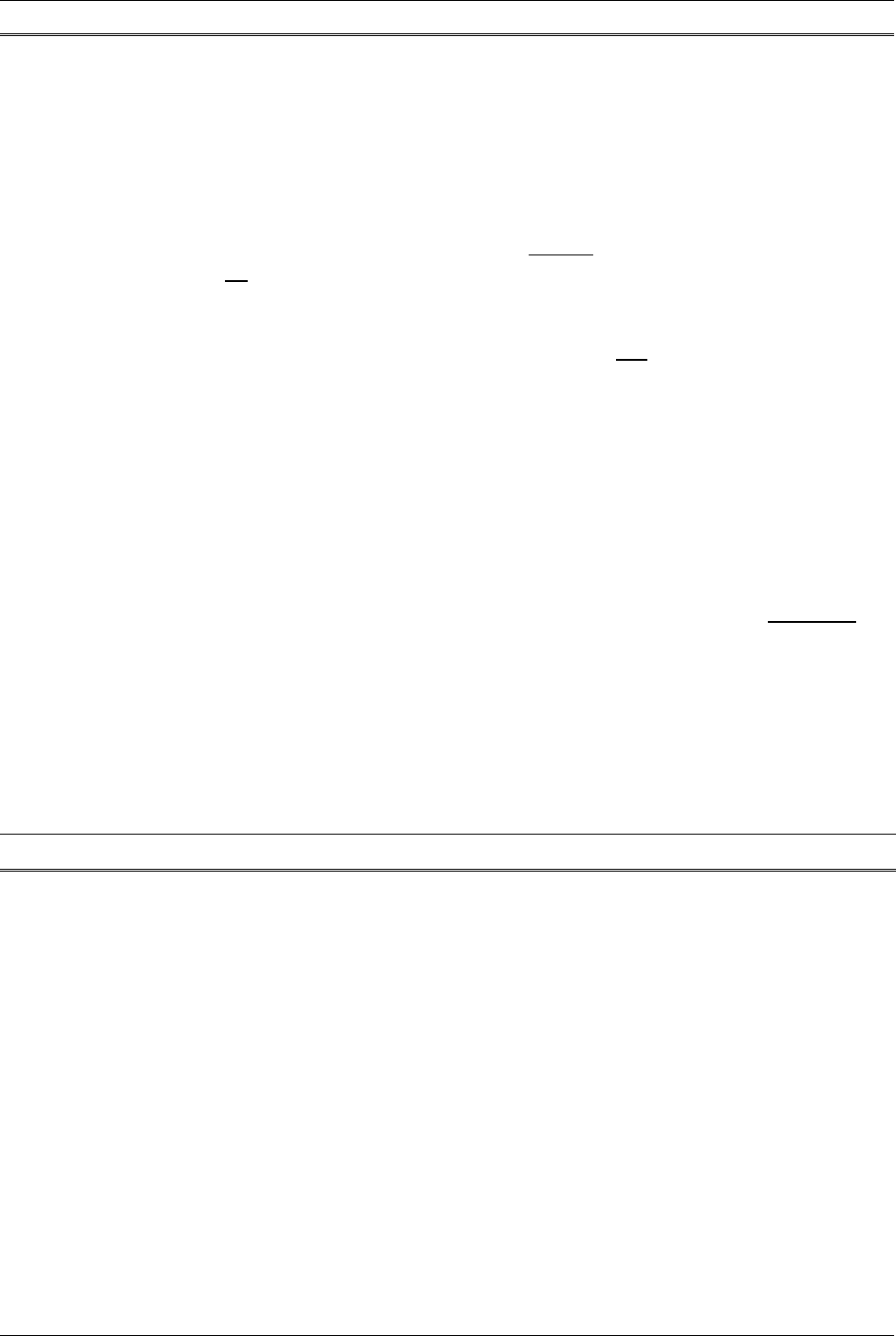
W4K0007XQ Judge Advocate General Manual
6 Warrant Officer Basic Course
Command Investigations (Continued)
Time Periods. The CA will prescribe when the report is due, normally 30 days from the
date of the convening order. The CA may grant extensions as needed. Requests and
authorizations for extensions need not be in writing, but must be noted in the preliminary
statement of the final report.
Conducting the Investigation: Helpful Hints. The general goal is to find out who,
what, when, where, how and why an incident occurred. The IO should decide what the
purpose and methodology of his/her investigation is before starting to collect evidence.
The IO should review all applicable checklists contained in Part G of the JAGMAN to
determine what specific informational requirements exist.
One of the principle advantages of the CI is that the IO is not bound by formal rules
of evidence: the IO may collect, consider and include in the record any matter relevant
to the investigation that is believable and authentic. Photographs, maps, sketches, etc.,
are always helpful to reviewing authorities in understanding what has occurred. So too
are present sense impressions (e.g., noise, texture, smell, observations) that are not
adequately portrayed in other evidence. You may record these impressions in a simple
memorandum for inclusion in the CI record.
Writing the Investigation: Helpful Hints. The key to writing a good CI is
organization. As IO, you must take the time to reconstruct the incident in your mind,
pulling together all the evidence. You must then document the incident in a readable
fashion. Remember, the CA and reviewing authorities will want to understand the
incident from a reading of the facts. Often a recitation of the facts in chronological, step-
by-step form is easiest to follow. Keep your findings of fact as clear and concise as
possible.
In drafting opinions and recommendations, the IO should address responsibility and
accountability. All areas which need corrective action must also be addressed.
Litigation-Report Investigations
The most recently created type of JAGMAN administrative investigation is the litigation-
report investigation. Convening such an investigation is appropriate whenever the
primary purpose of the investigation is to prepare and defend the legal interests of the
US Navy in claims proceedings or civil litigation. While closely resembling the command
investigation in method of evidence collection and report preparation, there are special
rules for the litigation-report investigation.
Special requirements. A litigation-report investigation must be: convened only after
consultation with a "cognizant judge advocate" (see JAGMAN, Appendix A-2-a for
definition); conducted under the direction and supervision of a judge advocate; protected
from disclosure to anyone who does not have an official need to know; conducted
primarily in anticipation of claims and/or litigation; and ultimately forwarded to the Judge
Advocate General.

W4K0007XQ Judge Advocate General Manual
7 Warrant Officer Basic Course
Litigation-Report Investigations (Continued)
Note: When investigations are conducted in anticipation of litigation but are not
conducted under the direction and supervision of a judge advocate or are
handled carelessly, they cannot be legally protected from disclosure to parties
whose litigation interests may be adverse to the interests of the United States. It
is imperative that litigation-report investigations be conducted in accordance with
the rules as stated in JAGMAN 0210.
Rules on convening. After first consulting with the cognizant judge advocate, a
litigation-report investigation will be convened, in writing, by the CA. The judge advocate
responsible for supervising the investigation will be named in the convening order; this
does not mean that the judge advocate acts as the IO, rather the judge advocate will be
responsible for overseeing the conduct of the investigation and preparation of the report.
Conducting the Investigation: Helpful Hints. As with the CI, the general goal of the
litigation-report investigation is to document who, what, when, where, how and why an
incident occurred. The IO must consult with the supervising judge advocate and decide
what the purpose and methodology of his/her investigation is before starting to collect
evidence. The IO should review all applicable checklists contained in Part G of the
JAGMAN to determine what specific informational requirements exist.
The IO is not bound by formal rules of evidence in gathering information: the IO may
collect, consider and include in the record any matter relevant to the investigation that is
believable and authentic. Photographs, maps, sketches, etc., are always helpful to
reviewing authorities in understanding what has occurred. So too are present sense
impressions (e.g., noise, texture, smell, observations) that are not adequately portrayed
in other evidence. You may record these impressions in a simple memorandum for
inclusion in the litigation report.
Writing the Investigation: Helpful Hints. The key to writing a litigation-report
investigation is organization. As IO, you must take the time to reconstruct the incident in
your mind, pulling together all the evidence. You must then document the incident in a
readable fashion. Remember, the CA and reviewing authorities will want to understand
the incident from a reading of the facts. Often a recitation of the facts in chronological,
step-by-step form is easiest to follow. Keep your findings of fact as clear and concise as
possible.
The IO must not draft opinions and/or recommendations unless specifically directed to
by the supervising judge advocate. Where the IO or CA feels an opinion and/or
recommendation from the IO should be included, the supervisory judge advocate should
be informed. Where the supervisory judge advocate feels the IO should express and
opinion and/or recommendation, such should be directed. Any direction for or
authorization to the IO to express an opinion and/or recommendation should be clear
and specific.

W4K0007XQ Judge Advocate General Manual
8 Warrant Officer Basic Course
Litigation-Report Investigations (Continued)
Protection. The IO must properly mark the litigation-report investigative report. See,
JAGMAN 0210e(3). Copies of the report, and any of the working notes of the IO, must
be maintained in files marked "FOR OFFICIAL USE ONLY: LITIGATION/ATTORNEY
WORK PRODUCT" and safeguarded against improper disclosure. A judge advocate
should be consulted before releasing the report, or any portion thereof, to anyone.
Line of Duty/Misconduct Determinations
To assist in the administration of naval personnel issues, the commanding officer is
required to inquire into certain cases of injury or disease incurred by members of his or
her command. When these inquiries are conducted, the commanding officer is required
to make what is referred to as a line of duty (LOD)/misconduct determination. As in
most matters, the type of inquiry and the degree of formality of the report will depend
upon the circumstances of the case.
Reason for LOD/misconduct determinations. Adverse LOD/misconduct
determinations can affect several benefits and/or rights administered by the Department
of the Navy, including: extension of enlistment; withholding of longevity and retirement
multipliers for the time missed, and; denial of disability retirement and/or severance pay.
When LOD/misconduct determinations are required. Findings concerning
LOD/misconduct must be made in every case in which a member of the naval service
incurs a disease or injury that:
1. Might result in permanent disability; or
2. results in the physical inability to perform duty for a period exceeding 24 hours (as
distinguished from a period of hospitalization for evaluation or observation).
JAGMAN 0221.
Opinions concerning line of duty are prohibited in death cases.
What constitutes "line of duty?" Injury or disease incurred by naval personnel while
on active duty service is presumed to have been incurred "in line of duty" unless there is
clear and convincing evidence that it was incurred:
1. As a result of the member's own "misconduct." There must be “clear and
convincing” evidence that the injury was intentionally incurred or the result of willful
neglect which demonstrates a reckless disregard for foreseeable and likely
consequences. Simple or ordinary negligence or carelessness alone does not
constitute misconduct. The fact that the conduct violates law, regulations, or order,
or is engaged in while intoxicated, does not, of itself, constitute a basis for a
misconduct determination.
2. While avoiding duty by deserting.

W4K0007XQ Judge Advocate General Manual
9 Warrant Officer Basic Course
Line of Duty/Misconduct Determinations (Continued)
What constitutes "line of duty?" (Continued)
3. While absent without leave, and such absence materially interfered with the
performance of required military duties (generally, in excess of 24 hours).
4. While confined under sentence of a court-martial that included an unremitted
dishonorable discharge.
5. While confined under sentence of civil court following conviction of an offense that
is defined as a felony by the law of the jurisdiction where convicted.
6. As intentionally self-inflicted (e.g., shooting yourself in the foot). An injury is the
proximate result (the foreseeable and likely result) of conduct when the conduct is
a reasonable foreseeable and direct cause of the injury and without which the
injury would not have occurred. That is, but for the conduct in question, the injury
would not have resulted.
Gross negligence is wrongful conduct that constitutes more than simple negligence (the
degree of care that a reasonable person would exercise under the same circumstances)
or carelessness. Gross negligence is a reckless disregard for one’s own safety or that
of others. Examples are as follows:
1. Simple Negligence: Exceeding the speed limit by 5 miles per hour.
2. Gross Negligence: Exceeding the speed limit by 40 miles per hour knowing that
you have no brakes.
3. Proximate Cause: If the injuries are caused by a meteor falling on the car, the
gross negligence involved in driving a car at a high rate of speed without brakes is
not the proximate cause of the injuries.
4. Reasonably Foreseeable: If the injuries are caused by a bridge collapsing
underneath the car and a Greyhound bus following the car into the water and
landing on top of the car, the gross negligence involved in driving the car without
brakes does not make those injuries reasonably foreseeable.
The only three possible misconduct/line of duty determinations are that injuries were
incurred:
1. In the line of duty and not due to misconduct (A Marine is injured in an automobile
accident through no fault of his own and was in an authorized leave or liberty
status).
Not in the line of duty and not due to misconduct (A Marine is injured in an
automobile accident through no fault of his own but while in an unauthorized
absence [UA] status for more than 24 hours).

W4K0007XQ Judge Advocate General Manual
10 Warrant Officer Basic Course
Line of Duty/Misconduct Determinations (Continued)
2. Not in the line of duty and due to the member’s own misconduct (A Marine in a
“deserted” status gets shot while attempting armed robbery).
It is impossible to determine that injuries were “incurred in the line of duty and due to the
member’s own misconduct,” since misconduct is one of the few exceptions to a Marine
being “in the line of duty.” Generally, injuries or disease are presumed to be incurred in
the line of duty and not due to misconduct. Each injury or disease requiring
misconduct/line of duty determinations must be the subject of a preliminary inquiry.
Preliminary Inquiries (PIs). Each injury or disease requiring LOD/misconduct
determinations must be reviewed through use of a PI. JAGMAN, 0230a. The
misconduct/line of duty determination is expressed in the OPINION section of the
investigative report in injury cases. Upon completion of the PI, the command is to report
the results to the GCMCA through use of the Personnel Casualty Report system.
JAGMAN, 0230b, MILPERSMAN 4210100. A copy of the PI report is delivered to the
appropriate medical department for inclusion in the health or dental record. If the
medical officer and the commanding officer are of the opinion that the injury or disease
was incurred "in line of duty" and "not as a result of the member's own misconduct,"
then appropriate entries stating such are entered in the health record. No further
investigation is required, unless directed by the GCMCA. JAGMAN, 0230c.
Command Investigations (CI's). As noted above, use of the PI and health record
entries will provide sufficient documentation where injuries or disease are found to have
occurred while in the line of duty, not due to misconduct. CI's are only required when:
1. The injury or disease was incurred in such a way that suggests a finding of
"misconduct" or "not in line of duty" might result (JAGMAN, 0230d(1), (2));
2. There is a reasonable chance of permanent disability and the CA considers an
investigation essential to ensuring an adequate official record;
3. The injury involves a Naval or Marine Reservist and the CA considers an
investigation essential to ensuring an adequate official record.
In endorsing a CI, the CA must specifically comment on the LOD/misconduct opinion
and take one of the following actions:
1. If the CA concludes that the injury or disease was incurred "in line of duty" and "not
due to a member's own misconduct," that shall be expressed (regardless of
whether it differs from or concurs with the IO's opinion). JAGMAN, 0231a(1).

W4K0007XQ Judge Advocate General Manual
11 Warrant Officer Basic Course
Line of Duty/Misconduct Determinations (Continued)
2. If, upon review of the report or record, the convening (or higher) authority
believes the injury or disease was incurred not "in line of duty" or "due to the
member's own misconduct," the member must be informed of the preliminary
determination and afforded an opportunity, not to exceed 10 days, to submit any
desired information to try and convince the CA otherwise. The member may be
permitted to review the investigative report before providing any information. If
the member decides to present information, it shall be considered by the CA and
appended to the record. If the member elects not to provide information, or the
10 day period lapses without submission, then such shall be noted in the
endorsement. JAGMAN, 0231a(2).
The CI is forwarded to a GCMCA with an assigned judge advocate. The GCMCA shall
indicate approval, disapproval or modification of conclusions concerning misconduct
and line of duty. A copy of such action will be returned to the CA so that appropriate
entries may be made in the member's service and medical records. JAGMAN,
0231b(1).
Required warning. Any person in the Armed Forces, prior to being asked to make or
sign any statement relating to the origin, incidence, or aggravation of any disease or
injury that he or she has suffered, shall be advised of the right not to make such a
statement
Special Considerations in Death Cases
The circumstances surrounding the death of naval personnel, or of civilian personnel at
places under military control, may be recorded in a variety of ways, such as autopsy
reports, battlefield reports, and medical reports. Investigations conducted pursuant to
the JAGMAN may also focus on such deaths and may incorporate other official reports
as enclosures. Since reports pertaining to deaths of military member are, by law,
generally releasable to family members, and since the deceased cannot contribute to
the investigation process, special considerations prevail in the investigation of death
cases.
Note: NCIS must be notified per SECNAVINST 5520.3 series on any death case
involving actual or suspected criminal conduct.
Preliminary Inquiry (PI). A PI should be conducted into the death of a member of the
naval service or into the death of a civilian which occurs at a place under naval control.
At the conclusion of the PI, the CA must determine which of the options listed in
JAGMAN 0205 will be exercised, and report that decision to the next superior in the
chain-of-command.
An investigation under the JAGMAN will normally not be conducted if the PI shows
that the death:
1. Was the result of a previously known medical condition and the adequacy of
military medical care is not reasonable in issue; or

W4K0007XQ Judge Advocate General Manual
12 Warrant Officer Basic Course
Special Considerations in Death Cases (Continued)
2. Was the result of enemy action.
Limited Investigations. Where the death of a service member occurred at a location
within the United States and not under military control, while the member was off-duty,
and there is no discernable "nexus," r connection, between the circumstances of the
death and the naval service, the command need only obtain a copy of the investigation
conducted by civilian authorities and retain it as an internal report. JAGMAN, 0235c.
The command shall document, in writing, the reasons for making the determination to
conduct a limited investigation, attaching the enumerated reasons to the internal report.
Command Investigations (CI). A CI (or in some cases, a litigation-report investigation)
will be conducted if the PI shows:
1. The case involves civilian or other non-naval personnel found dead aboard an
activity under military control where the death was apparently caused by suicide or
other unusual circumstances:
2. The circumstances surrounding the death places the adequacy of military medical
care reasonably at issue;
3. There exists a probable "nexus," or connection, between the naval service and the
circumstances of the death of a service member; or
4. It is unclear if enemy action caused the death, such as in possible "friendly- fire"
incidents.
Investigation reports will not contain any opinions concerning line of
duty/misconduct in death cases. Misconduct will not be attributed to a deceased
member.
Even though prohibited from rendering the ultimate line of duty/misconduct opinion,
an investigation may uncover evidence which calls into question the propriety of a
deceased individual's conduct. In a fair and impartial manner, such facts must be
documented in the investigation. To find that the acts of a deceased service member
may have caused harm or loss of life, including the member's own, through intentional
acts, findings of fact must be established through clear and convincing evidence.
JAGMAN, 0240.
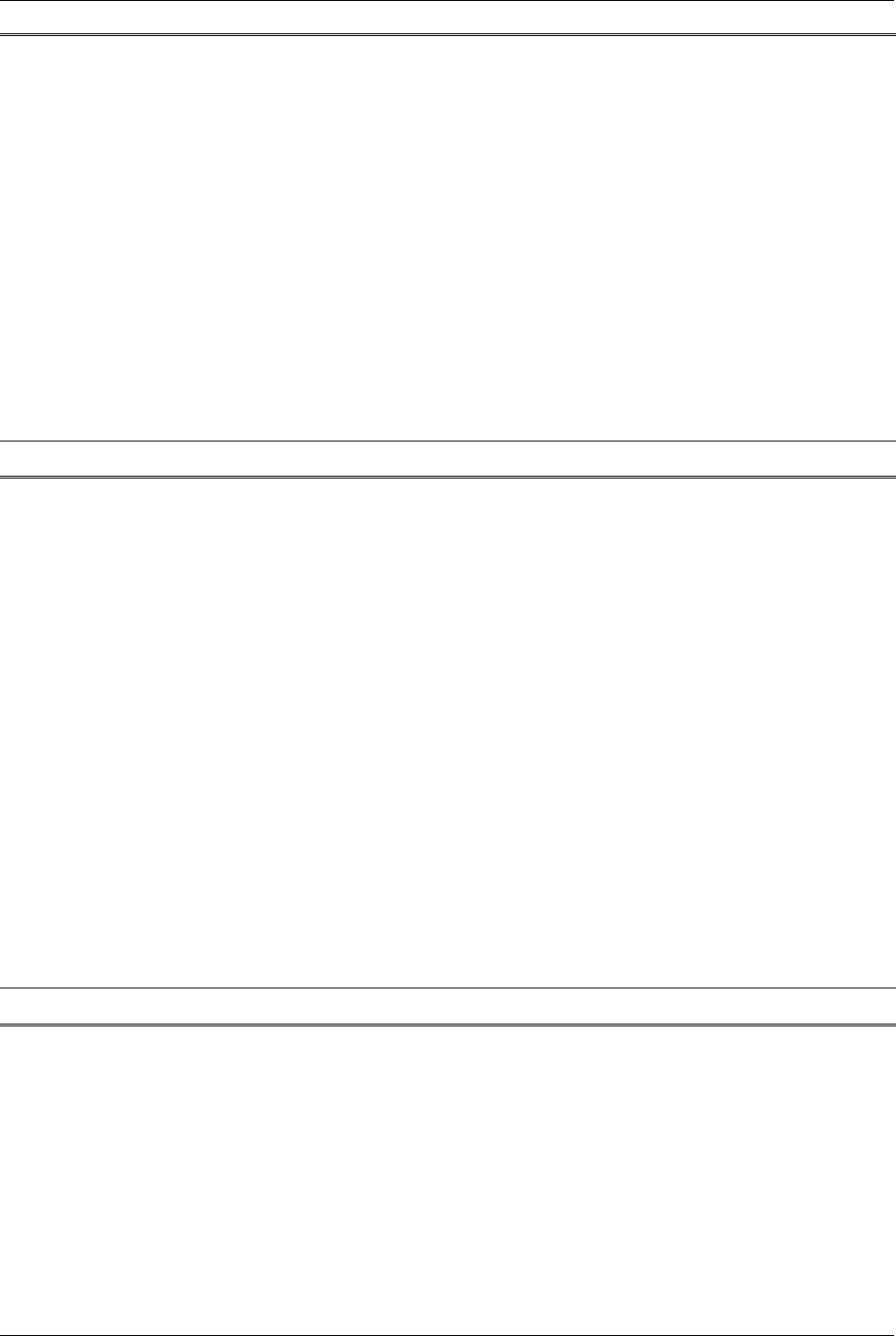
W4K0007XQ Judge Advocate General Manual
13 Warrant Officer Basic Course
Special Considerations in Death Cases (Continued)
Independent Reviews. Prior to endorsement of an investigation which calls into
question the deceased's conduct, the CA may wish the report to be reviewed to ensure
thoroughness, accuracy of the findings, and fairness to the deceased member. The
individual selected to conduct this review shall have no previous connection to the
investigative process and must be outside the CA's immediate chain of command. To
the extent possible, the reviewer should possess training, experience, and background
sufficient to allow critical analysis of the factual circumstances. The reviewer is not to
act as the deceased's representative, but rather provide critical analysis from the
perspective of the deceased, tempered by the reviewer's own experience, training, and
education. If the reviewer believes comments are warranted, such comments shall be
completed and provided to the CA within 10 working days of the report's delivery to the
reviewer. The CA is to consider any comments submitted by the reviewer and take any
action deemed appropriate. The comments shall be appended to the investigative
report. JAGMAN, 0239.
Handling Witnesses
In handling witnesses, there are several things to keep in mind. You may obtain
information by personal interview, correspondence, or telephone inquiry. The IO should
never obtain signed or sworn statements during the course of a litigation-report
investigation unless he/she has consulted with the supervising judge advocate. Before
interviewing witnesses, ensure you understand when and what rights advisements may
be required: if you suspect a military member has committed a criminal offense, Article
31, UCMJ, warnings are required; when interviewing a service member concerning the
incurring of injury, warning under JAGMAN 0221b is required; if you are asking for
personal information (as opposed to information related to performance of duty), Privacy
Act advice is necessary.
Each witness should be interviewed separately. Let the witness tell what happened;
don't ask questions that suggest answers. Ask for clarification if the witness is speaking
in broad or vague terms (e.g., "He was drunk"; "What gave you that impression?"; "He
had an odor of alcohol about him, his eyes were bloodshot, he was slurring his speech
and unable to maintain his balance"). Try to obtain as much information during the
interview as possible; the relevance of a particular fact may not become clear until later
in the investigation.
Summary
As a Marine Corps officer you will encounter at some point in your career JAGMAN
investigations. You must have a familiarization with the correct process in order to
properly construct and/or review these investigations.

W4K0007XQ Judge Advocate General Manual
14 Warrant Officer Basic Course
References
Reference Number or
Author
Reference Title
FM 19-10
Military Police Law and Order Operations
FM 19-20
Law Enforcement Investigations
JAGINST 5800.7D
Manual of the Judge Advocate General (JAGMAN)
MCM
Marine Corps Manual
MCO P4400.150E
Consumer-Level Supply Policy Manual
MCO P5580.2A
Marine Corps Law Enforcement Manual
Glossary of Terms and Acronyms
Term or Acronym
Definition or Identification
CI
Command Investigation
JAGMAN
Manual of the Judge Advocate General
LOD
Line of duty
PI
Preliminary inquiry
UA
Unauthorized absence
UCMJ
Uniform Code of Military Justice
Notes
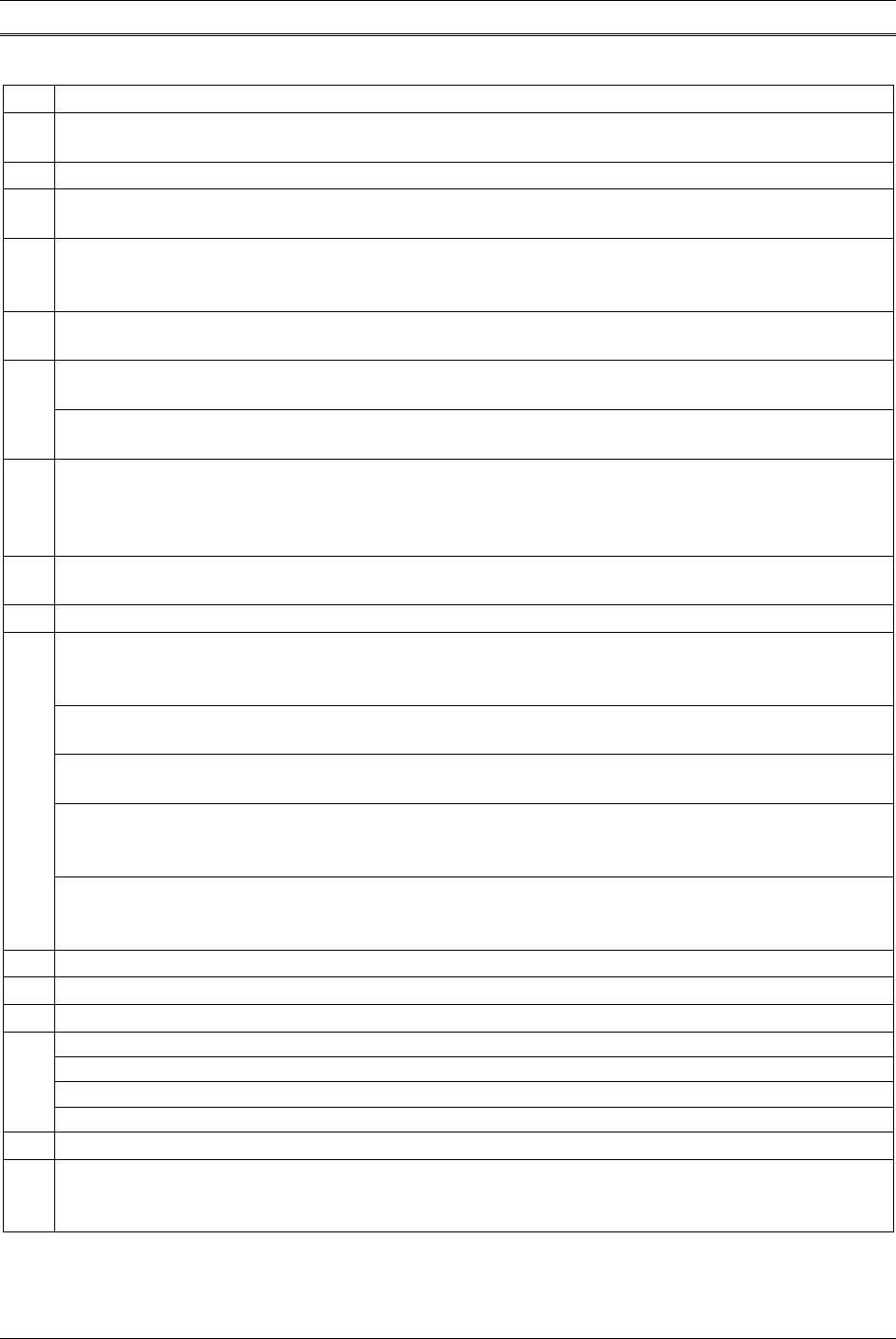
W4K0007XQ Judge Advocate General Manual
15 Warrant Officer Basic Course
Appendix A, Preliminary Inquiry
Preliminary Inquiry Checklist
CA appoints a PI officer.
Begin work on the inquiry immediately upon hearing that you are to be appointed,
whether or not you have received an appointing order in writing.
Decide what the purpose and methodology of your inquiry will be.
_____ Can this preliminary inquiry be completed in three working days? If not, you may
be trying to do too much. Further clarification from the CA may be necessary.
Has this incident involved a member of the command and/or occurred within the
command? If not, are you the appropriate command to conduct the PI and/or any
administrative investigation?
Is this incident under investigation by NCIS, the FBI, or local civilian law enforcement
agencies? (If yes, refer to JAGMAN 0204c).
Is this considered a "major" incident? (Refer to JAGMAN Appendix A-2-a for a definition
of a "major" incident.)
_____ If believed to be a "major" incident, refer to JAGMAN 0204g, 0204h, 0205a(1),
and 0211e(1).
Obtain any available documentation pertaining to the inquiry, i.e., copies of rules and
regulations, instructions, correspondence and messages, logs, standard operating
procedures, personnel records, medical records, official reports, vehicle accident report
forms, etc.
Locate and preserve evidence, i.e., real objects (firearms, bullets, etc.) and note physical
locations (accident sites, etc).
Draw up a list of possible witnesses.
_____ Conduct an interview of any witness you deem relevant to your inquiry, those that
will provide you with enough information to understand what occurred and enable
you to make an informed recommendation to the CA.
_____ If a witness is not physically available, an interview may be conducted via
telephone or message.
_____ Advise any military witness who may be suspected of an offense, misconduct, or
improper performance of duty, of his/her rights under Article 31, UCMJ.
_____ Advise each witness prior to signing any statement relating to the origin, incident,
or aggravation of any disease or injury that he/she has suffered, of his/her right
not to sign such a statement. See JAGMAN 0221b.
_____ Is a Privacy Act statement required for any witness interviewed? JAGMAN 0216
requires that Privacy Act statements be obtained from each witness from whom
personal information is taken.
Does the CA desire/require the outcome to be documented in writing?
The preliminary inquiry officer makes his/her report to the CA.
Which of the command options does the CA choose in light of the preliminary inquiry?
_____ No further action.
_____ Command investigation.
_____ Litigation-report investigation.
_____ Recommend court/board of inquiry to GCMCA.
CA reports the result of the PI to the ISIC.
Preserve all evidence, witness statements, documentation gathered during the
preliminary inquiry, for possible use in any administrative investigation that may be
subsequently convened.

W4K0007XQ Judge Advocate General Manual
16 Warrant Officer Basic Course
Appendix A, Preliminary Inquiry (Continued)
Sample Preliminary Inquiry Report
From: (Name and rank of individual conducting preliminary inquiry)
To: (Title of authority ordering preliminary inquiry)
Subj: PRELIMINARY INQUIRY INTO (DESCRIPION OF INCIDENT)
Ref: (a) JAGMAN Section 0204
1. This reports completion of the preliminary inquiry conducted in accordance with
reference (a) into (description of incident).
2. Personnel contacted: (List individuals with name, rank, title, unit, and telephone
number).
3. Materials reviewed: (List documents, objects, materials, tangibles reviewed
and, if of probable evidentiary value, where stored together with name of the custodian
of such material and that person's phone number).
4. Summary of findings: (Summary should not extend beyond one paragraph
and should summarize both what is known and unknown about the event in
question).
5. Recommendation: (Choose one: consult a judge advocate; no further
investigation warranted; command investigation; litigation-report investigation; board of
inquiry; or court of inquiry).
_____________________________________
Name, rank, unit, telephone
(Note: attachments may be added to the reports as desired.)

W4K0007XQ Judge Advocate General Manual
17 Warrant Officer Basic Course
Appendix B, Command Investigation
Sample Command Investigation Convening Order
Ser Info
Date
From: Commanding Officer, Headquarters Battalion, Marine Corps Base, Camp
Pendleton, CA
To: Captain ______________________, USMC
Subj: COMMAND INVESTIGATION OF THE FIRE THAT OCCURRED ON AT
________ on __ AUGUST 20__
Ref: (a) JAG Manual
1. This appoints you, per chapter II of reference (a), to inquire into the facts and
circumstances surrounding the fire that occurred at ________ on __ August 20__.
2. Investigation the cause of the fire, resulting injuries and damages, and any
fault, neglect, or responsibility therefore, and recommend appropriate administrative or
disciplinary action. Report your findings of fact, opinions, and recommendations in letter
form by __ September 20__, unless an extension of time is granted. If you have not
previously done so, read chapter II of reference (a) in its entirety before beginning your
investigation.
3. You may seek legal advice from _______________ during the course of your
investigation.
4. By copy of this appointing order, Commanding Officer, Headquarters Company,
is directed to furnish necessary clerical assistance.
__________________________________
Colonel U.S. Marine Corps
Copy to:
CG, MCB CamPen, CA
CO, HQCo, HQBn, MCB, CamPen, CA
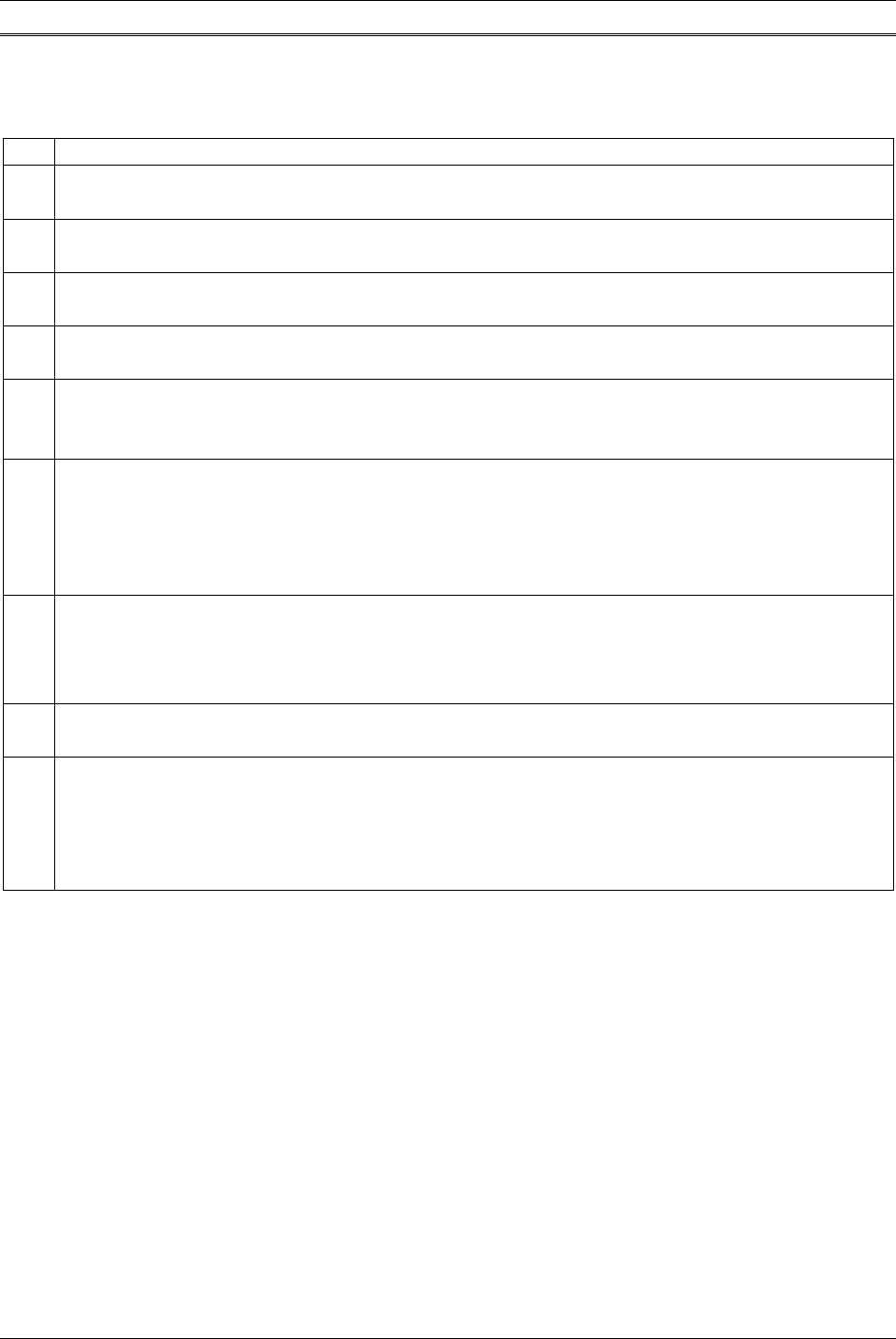
W4K0007XQ Judge Advocate General Manual
18 Warrant Officer Basic Course
Appendix B, Command Investigation (Continued)
The Command Investigation Checklist
I. Getting Started.
CA appoints an investigating officer in writing.
Begin work on the investigation immediately upon hearing that you are to be
appointed, whether or not you have received a convening order in writing.
Carefully examine the convening order to determine the scope of your
investigation
Determine when the investigative report is due to the CA.
_____ If you cannot reach that deadline, request an extension.
Review all relevant instructions on your investigation, i.e., JAGMAN Chapter 2,
etc.
Determine which checklists may apply to your investigation and review them
carefully to determine what information is required. Refer to sections IX and X of
this handbook.
Decide what the purpose and methodology of your investigation will be.
_____ Where is evidence likely to be located?
_____ How can such evidence best be obtained and preserved?
Has this incident involved a member of the command and/or occurred within the
command?
If not, are you the appropriate command to conduct the investigation?
Is this incident under investigation by NCIS, the FBI, or local civilian law
enforcement agencies? (If yes, refer to JAGMAN 0204c).
Is this considered a "major" incident? (Refer to JAGMAN Appendix A-2-a for
definition.)
_____ If believed to be a "major" incident, refer to JAGMAN 0204g, O204h,
0205a(1), and 0211e(1).
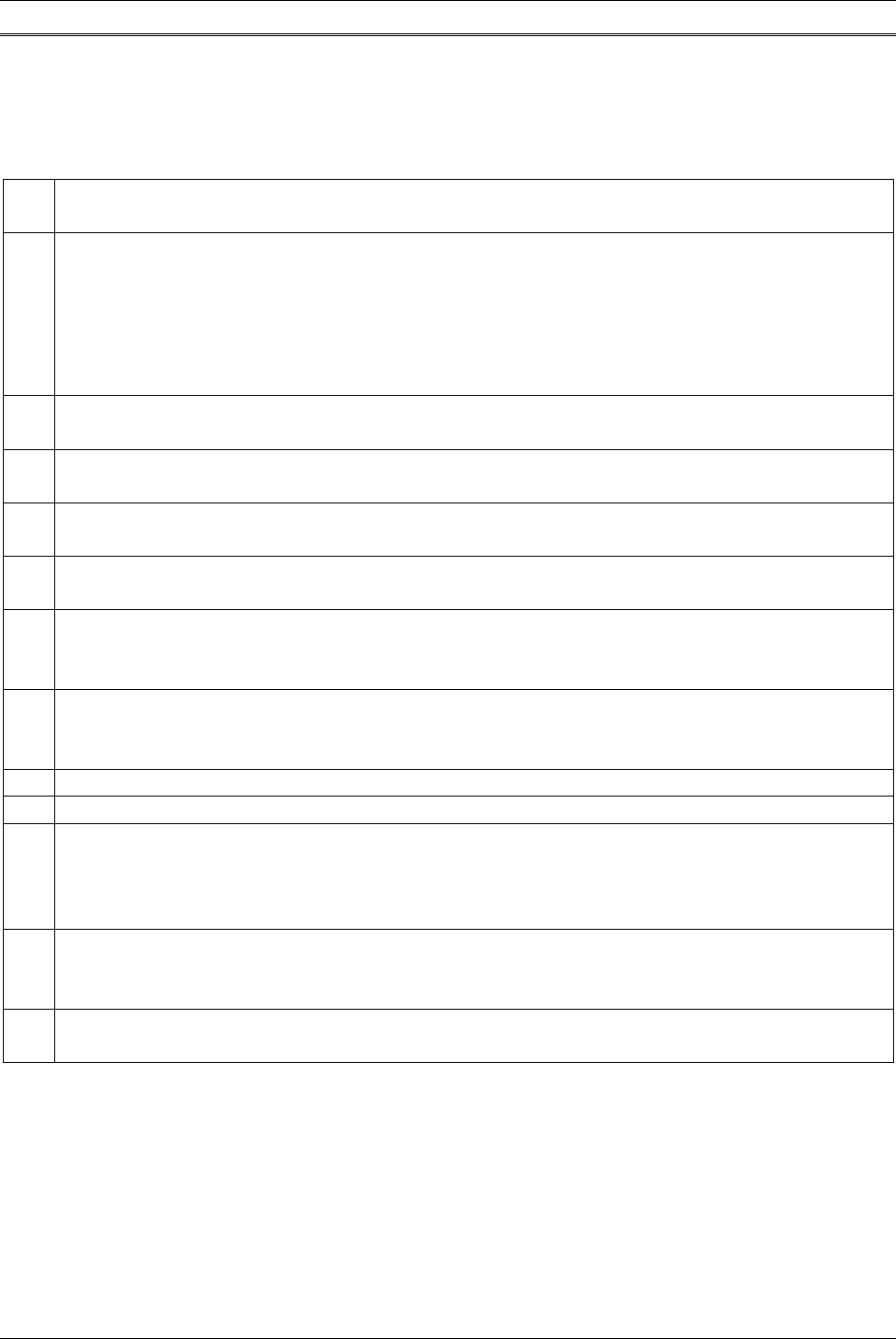
W4K0007XQ Judge Advocate General Manual
19 Warrant Officer Basic Course
Appendix B, Command Investigation (Continued)
The Command Investigation Checklist (Continued)
II. Handling Witnesses.
(Note: You may wish to gather and review other types of evidence before interviewing
any or all witnesses.)
Draw up a list, to be supplemented as the investigation progresses, of all
possible witnesses.
Determine if witnesses are transferring, going on leave, hospitalized, etc., which
might take them out of the area before review of the investigation is completed.
_____ Inform the CA, orally, with confirmation in writing, immediately upon
learning that a material witness might leave the area before review of
the investigation is completed.
Conduct an intensive interview of each witness, i.e. names, places, dates, and
events that are relevant.
Witness statements should be as factual in content as possible. If a witness
makes a vague statement ("he was drunk"), try to pin down the actual facts.
If a witness is not physically available for an interview, attempt to conduct it via
telephone, mail or message.
Advise any military witness who may be suspected of an offense, misconduct, or
improper performance of duty, of his/her rights under Article 31b.
Advise each witness prior to signing any statement relating to the origin, incident,
or aggravation of any disease or injury that he/she has suffered, of his/her
right not to sign such a statement. See JAGMAN 0221b.
Is a Privacy Act statement required for the witness interviewed? JAGMAN 0216
requires that Privacy Act statements be obtained from each witness from
whom personal information is taken.
Record the interview of each witness in detailed notes or by mechanical means.
Reduce each witness' statement to a complete and accurate narrative statement.
If possible, obtain the signature of each witness, under oath and witnessed, on
the narrative statement of his/her interview. If not possible, indicate on the
narrative statement that it represents either an accurate summary, or
verbatim transcript, of oral statements made by the witness.
Direct witnesses subject to naval authority not to discuss their statements.
Witnesses not subject to naval authority may be requested not to discuss
their statements.
Review your list of possible witnesses to ensure that you have interviewed all
such witnesses.
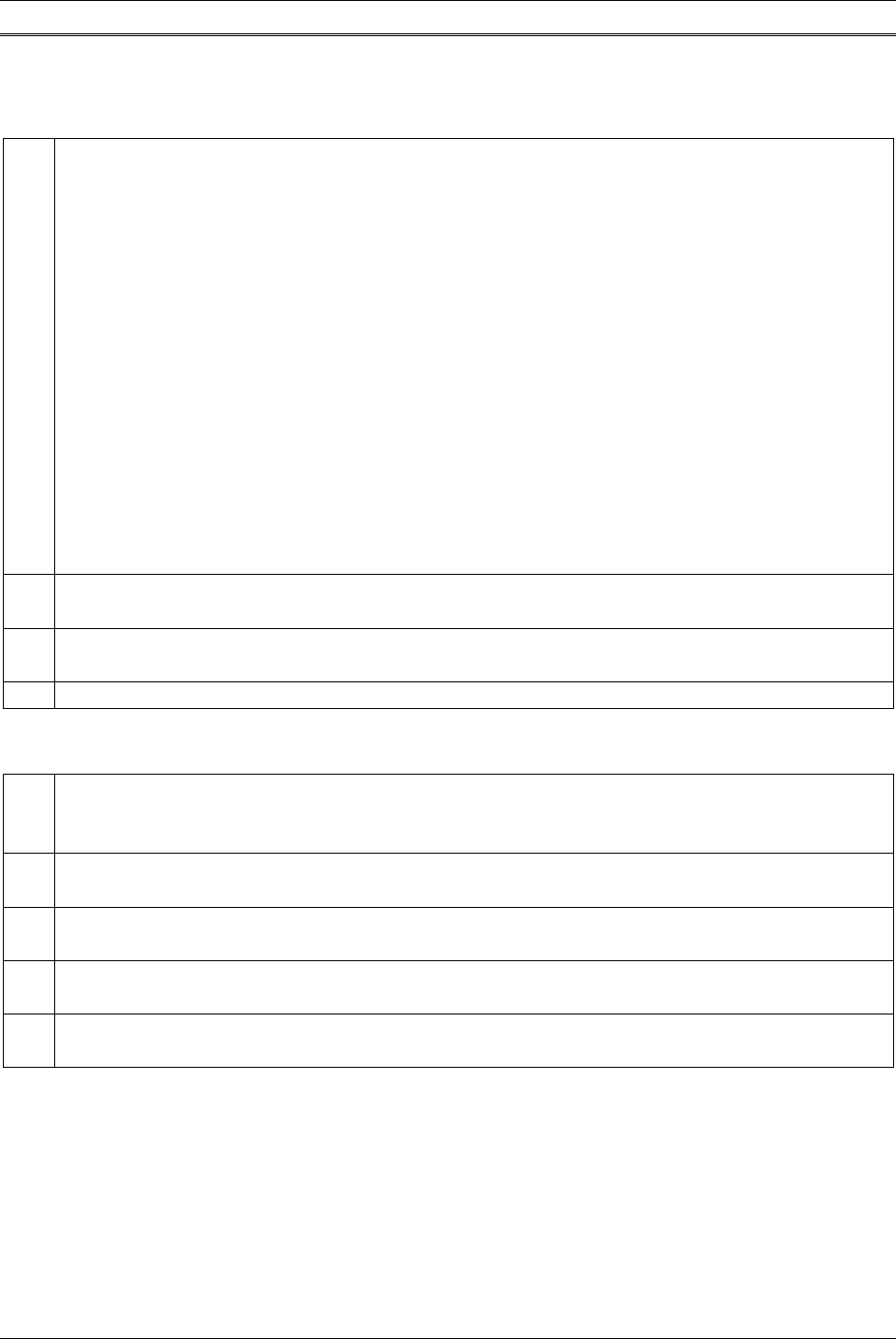
W4K0007XQ Judge Advocate General Manual
20 Warrant Officer Basic Course
Appendix B, Command Investigation (Continued)
The Command Investigation Checklist (Continued)
III. Documentary Evidence
Make a list, to be supplemented as the investigation proceeds, of all possible
documents, to include:
_____ Copies of relevant rules, regulations, instructions, standard operating
procedures;
_____ relevant correspondence and messages;
_____ personnel records;
_____ medical records (clinical and hospital records, death certificates, autopsy
reports, etc.);
_____ official logs and reports; and
_____ required forms (personnel injury forms, vehicle accident reports, etc.).
Examine your list of possible documents to ensure that you have obtained all
such documents available to you.
If unable to obtain a certain document, attempt to obtain it via fax, message,
telephone, or mail.
Obtain originals or certified true copies of all documents available to you.
IV. Other Evidence
Make a list of any other information which may be of assistance to reviewing
authorities in understanding the incident investigated (real objects, physical
locations, maps, charts, photographs, your personal observations, etc.).
Examine your list of possible information to ensure that you have obtained all
such information personally available to you.
If unable to obtain certain information, attempt to obtain if via fax, message,
telephone, or mail.
Attempt to reduce such information to a form, such as photographs or sketches,
which can be conveniently included in your investigative report.
Classification of the report, (secret, confidential, etc.). Omit classified information
unless absolutely essential (see JAGMAN 0217b).
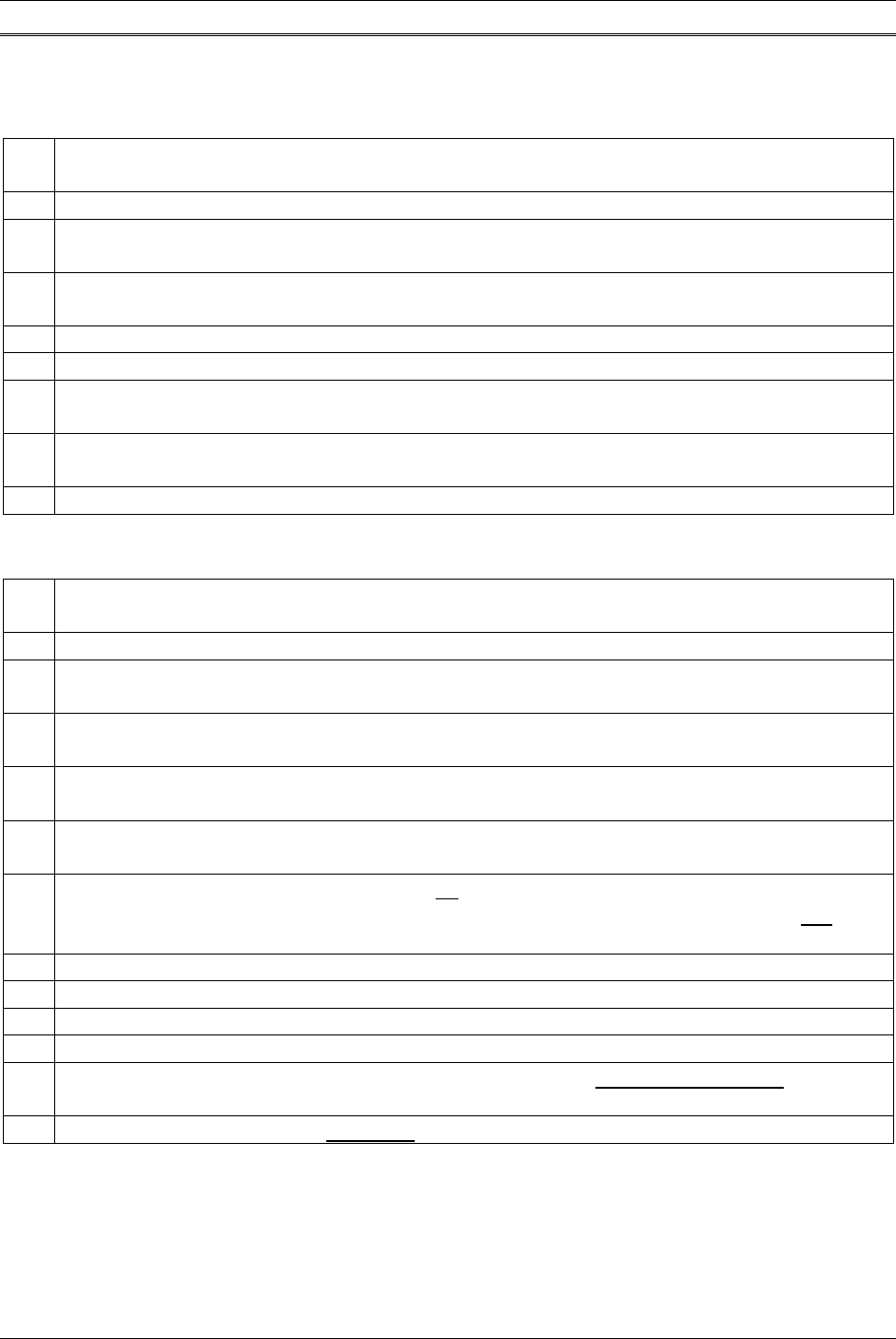
W4K0007XQ Judge Advocate General Manual
21 Warrant Officer Basic Course
Appendix B, Command Investigation (Continued)
Drafting the Command Investigation Report
Preliminary Statement
State that all reasonably available evidence was collected or is forthcoming and
that each directive of the CA has been met.
Set forth the nature of the investigation.
Relate any delays or difficulties encountered, including non-availability of
evidence or failure to interview relevant witnesses.
Explain any conflicts in evidence, which evidence is considered more reliable,
and why.
Note any extensions requested and granted.
Note the limited participation by any member or advisor.
If social security numbers contained in the report were obtained from sources
other than the individual (i.e., from service records), so state.
Indicate where original items of evidence are maintained, how they are being
safeguarded, and the name and phone number of the responsible custodian.
Any other information necessary for a complete understanding of the case.
Findings of Fact. A fact is something that is or happens.
Distinguish in your own mind the differences between the terms "fact", "opinion",
and "recommendation".
Conduct an evaluation of the evidence or lack of evidence.
Review any special fact-finding requirements pertaining to the specific incident in
the JAGMAN checklists.
When drafting the findings of fact, be specific as to persons, times, places, and
events.
Reference after each finding of fact, the enclosures to the report which support
the finding of fact.
Identify by grade or rate, service number, organization, occupation or business,
and residence person(s) connected with the incident.
Make appropriate findings of fact for all relevant facts, including information
already stated in the preliminary statement. The preliminary statement is not a
substitute for findings of fact.
Place findings of fact in chronological and/or logical order.
Is each fact a separate finding?
Is each finding of fact supported by an enclosure?
Are all enclosures used? (if not used, delete the enclosure.)
Ensure that, when read together, the findings of fact tell the whole story of the
incident without having to refer back to the enclosures.
Does the story flow? Is it readable?
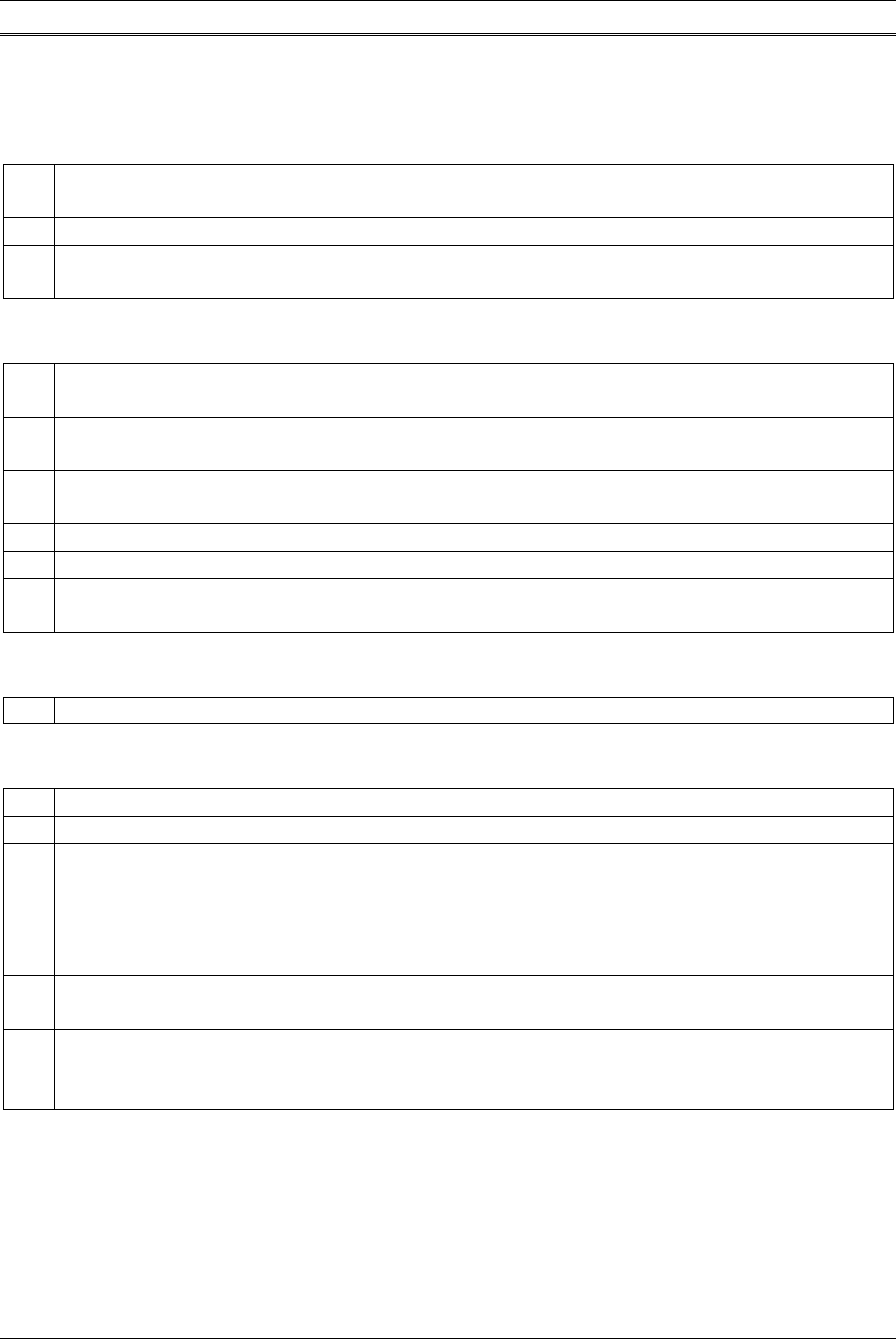
W4K0007XQ Judge Advocate General Manual
22 Warrant Officer Basic Course
Appendix B, Command Investigation (Continued)
Drafting the Command Investigation Report (Continued)
Opinions. Reasonable evaluations, interferences, or conclusions based on the facts
found. Opinions are value judgements.
Ensure that each of your opinions are exactly that, not findings of fact or
recommendations.
Ensure that each opinion references the finding(s) of fact that support it.
Ensure that you have rendered those opinions required by the convening order,
as well as any others you feel are appropriate.
Recommendations. Proposals made on the basis of the opinions.
Ensure that each of your recommendations are exactly that, not findings of fact
or opinions.
Ensure that each recommendation is logical and consistent with the findings of
fact and opinions.
Address those recommendations specifically required by the convening order
and any others considered appropriate.
Recommend any appropriate corrective, disciplinary, or administrative action.
Enclose a draft of a punitive letter of reprimand if recommending such action.
Draft and send, under separate cover, a non-punitive letter of caution if
recommending such action.
Signing.
Sign your report.
Enclosures.
Convening order.
All evidence in logical order.
Is each statement, affidavit, transcript or summary of testimony, photograph,
map, chart, document, or other exhibit, a separate enclosure?
_____ Are any reproduced documents certified to be true copies?
_____ Have you complied with the special marking requirements applicable to
photographs? See JAGMAN, 0215c, and 0217h(4).
Are enclosures listed in the order in which they are cited in the body of the
investigation?
Ensure that you do not have inappropriate material in the investigation: NCIS
reports of investigations; aircraft mishap reports; Inspector General reports;
polygraph examinations; medical quality assurance investigations.

W4K0007XQ Judge Advocate General Manual
23 Warrant Officer Basic Course
Appendix B, Command Investigation (Continued)
Drafting the Command Investigation Report (Continued)
Concluding Action.
Have you stretched your imagination to the utmost in gathering and recording all
possible information on the incident investigated?
Have you checked and double-checked to ensure that your findings of fact,
opinions, recommendations, and enclosures are in proper order?
Have you carefully proofread your Investigative Report to guard against
embarrassing clerical errors?
Have you signed your Investigative Report?

W4K0007XQ Judge Advocate General Manual
24 Warrant Officer Basic Course
Appendix B, Command Investigation (Continued)
Sample Command Investigation Report
Ser Info
Date
From: Captain ___________________________, USMC
To: Commanding Officer, Headquarters Battalion, Marine Corps Base, Camp
Pendleton, CA
Subj: SAME AS SUBJECT ON CONVENING ORDER
Encl: (1) Convening order and modifications thereto (if any were issued)
(2) Summary (or verbatim) of sworn (or unsworn) testimony of _____ (a witness)
(3) Summary (or verbatim) of sworn (or unsworn) testimony of _____ (a witness)
(4) Statement of ___________________, signed by witness
(5) Description of ________________ (evidence found at scene of the accident)
(6) Photograph of ________________ depicting
Note: Testimony of each witness, observations of the investigator, photographs,
diagrams, and suitable reproductions of tangible evidence should be listed and
attached as enclosures to the investigative report. The location of all original
evidence, such as logs, charts, tangible items, and so forth, and the name and
phone number of the official responsible for its safekeeping must be stated in the
report, either on each enclosure or in the preliminary statement.
Preliminary Statement
1. Paragraph 1 of an investigative report must contain information in the form of a
"preliminary statement." Contents may require continuation in one or more additional
paragraphs. In general, see JAGMAN 0217(c) for required contents. Where applicable,
an investigating officer should indicate the name and organization of any judge
advocate consulted. Extensions of time to complete the report should be noted here.
Also state in appropriate cases that the matter was first referred to NCIS and NCIS
expressed no objection to proceeding with the investigation.
Findings of Fact
1. __________________________________________________ [encls ( ), ( )]
2. __________________________________________________ [encls ( ), ( )]
3. __________________________________________________ [encls ( ), ( )]
Note: Findings of fact constitute an investigating officer’s description of details of events
based on evidence. Findings must be as specific as possible about time, places,
and persons involved. Each fact may be made a separate finding. An
investigating officer may determine the most effective presentation for a particular
case. Each fact must be supported by testimony of a witness, statement of the

W4K0007XQ Judge Advocate General Manual
25 Warrant Officer Basic Course
Appendix B, Command Investigation (Continued)
Sample Command Investigation Report (Continued)
investigative officer, documentary evidence, or tangible (real) evidence attached
to the investigative report as an enclosure. Each finding of fact must reference
each enclosure that supports it.
Opinions
1. _____________________________ [FF ( )]
2. _____________________________ [FF ( )]
3. _____________________________ [FF ( )]
Note: An opinion is a reasonable evaluation, reference, or conclusion based on facts
found. Each opinion must be supported by findings of fact. Determination of line of
duty and misconduct is properly stated as an opinion.
Recommendations
1.____________________________________________________________________
2.____________________________________________________________________
3.____________________________________________________________________
___________________________________________
(SIGNATURE OF INVESTIGATING OFFICER)

W4K0007XQ Judge Advocate General Manual
26 Warrant Officer Basic Course
Appendix C, Sample Litigation-Report Investigation Convening Order
Ser Info
Date
From: Commanding Officer, Naval Submarine Base New London
To: Lieutenant _____________________, USN
Subj: LITIGATION-REPORT INVESTIGATION OF THE FIRE THAT OCCURRED
AT QUARTERS XYZ, NAVSUBBASE NLON, ON __ AUGUST 20__
Ref: (a) JAG Manual
1. Per reference (a), you are hereby appointed to investigate the circumstances
surrounding the fire that occurred at Quarters XYZ, Naval Submarine Base New
London, on __ August 20__, and to prepare the related litigation-report. During the
investigation, you will be under the direction and supervision of LCDR _____________,
JAGC, USN. Consult LCDR ______________ before beginning your inquiry or
collecting any evidence. If you have not already done so, you should also read chapter
II of reference (a) in its entirety before consulting LCDR ______________. .
2. This investigation is being convened and your report is being prepared in
contemplation of litigation and for the express purpose of assisting attorneys
representing interests of the United States in this matter. As such, it is privileged and
should be discussed only with personnel who have an official need to know of its
progress or results. If you have any doubt about the propriety of discussing the
investigation with any particular individual, then you should seek guidance from LCDR
before doing so.
3. Investigate all facts and circumstances surrounding the fire, including the cause of
the fire, resulting injuries and damages, and any fault, neglect, or responsibility
therefore. Report your findings to LCDR ______________ by __ September 20__,
unless an extension of time is granted. Do not express any opinions or
recommendations unless LCDR _______________ directs you to do so. Label your
report "FOR OFFICIAL USE ONLY: ATTORNEY WORKPRODUCT," and take
appropriate measures to safeguard it.
__________________________________
(Signature of CA)
Copy to:
COMSUBGRU TWO

W4K0007XQ Judge Advocate General Manual
27 Warrant Officer Basic Course
Appendix C, Sample Litigation-Report Investigation Convening Order
(Continued)
The Litigation Report Investigation Checklist
I. Getting Started
Convening authority (CA) consults with cognizant judge advocate.
CA appoints an investigating officer in writing, identifying the judge advocate
under whose direction and supervision the investigation will be conducted.
The IO must consult with the assigned judge advocate before beginning the
investigation.
Carefully examine the convening order to determine the scope of your
investigation.
Determine when the investigative report is due to the CA.
_____ If you cannot reach that deadline, request an extension.
Review all relevant instructions on your investigation, e.g. JAGMAN Chapter 2,
etc.
_____ Determine which checklists may apply to your investigation and review
them carefully to determine what information is required.
Decide what the purpose and methodology of your investigation will be.
_____ Where is evidence likely to be located?
_____ How can such evidence best be obtained and preserved?
Has this incident involved a member of the command and/or occurred within the
command?
If not, are you the appropriate command to conduct the investigation?
Is this incident under investigation by NCIS, the FBI, or local civilian law
enforcement agencies? (If yes, refer to JAGMAN 0204c).
Is this considered a "major" incident?
_____ If believed to be a "major" incident, refer to JAGMAN 0204g, O204h, and
0205a(1).

W4K0007XQ Judge Advocate General Manual
28 Warrant Officer Basic Course
Appendix C, Sample Litigation-Report Investigation Convening Order
(Continued)
The Litigation Report Investigation Checklist (Continued)
PRIOR TO OBTAINING ANY OF THE BELOW INFORMATION CONSULT WITH THE
ASSIGNED JUDGE ADVOCATE.
II. Handling Witness
(Note: You may wish to gather and review other types of evidence before interviewing
any or all witnesses.)
Draw up a list, to be supplemented as the investigation progresses, of all
possible witnesses.
Determine if witnesses are transferring, going on leave, hospitalized, etc., which
might take them out of the area before review of the investigation is completed.
_____ Inform the CA, orally, with confirmation in writing, immediately upon
learning that a material witness might leave the area before review of the
investigation is completed.
Conduct an intensive interview of each witness, e.g. names, places, dates, and
events that are relevant.
_____ Witness statements should be as factual in content as possible. If a
witness makes a vague statement ("he was drunk") try to pin down actual
facts.
If a witness is not physically available for an interview, attempt to conduct it via
telephone, mail or message.
Advise any military witness who may be suspected of an offense, misconduct, or
improper performance of duty, of his/her rights under Article 31b, UCMJ.
Advise each witness prior to signing any statement relating to the origin, incident,
or aggravation of any disease or injury that he/she has suffered, of his/her right
not to sign such a statement. See JAGMAN 0221b.
Is a Privacy Act statement required for the witness interviewed? JAGMAN 0216
requires that Privacy Act statements be obtained from each witness from whom
personal information is taken.
Record the interview of each witness in detailed notes.
Reduce each witness' statement to a complete and accurate narrative statement.
_____ Witnesses will not, in most cases, be asked to make a written statement
or to sign a statement that the investigator has prepared. DO NOT attach
signed witness statements as enclosures to the investigation, unless
the supervising judge advocate so directs.
_____ Indicate on the narrative statement that it represents an accurate
summary of oral statements made by the witness.
Review your list of possible witnesses to ensure that you have interviewed all
such witnesses.

W4K0007XQ Judge Advocate General Manual
29 Warrant Officer Basic Course
Appendix C, Sample Litigation-Report Investigation Convening Order
(Continued)
The Litigation Report Investigation Checklist (Continued)
PRIOR TO OBTAINING ANY OF THE BELOW INFORMATION CONSULT WITH THE
ASSIGNED JUDGE ADVOCATE.
III. Document Evidence
Make a list, to be supplemented as the investigation proceeds, of all possible
documents, to include:
_____ Copies of relevant rules, regulations, instructions, standard operating
procedures;
_____ relevant correspondence and messages;
_____ personnel records;
_____ medical records (clinical and hospital records, death certificates, autopsy
reports, etc.);
_____ official logs and reports; and
_____ required forms (personnel injury forms, vehicle accident reports, etc.)
Examine your list of possible documents to ensure that you have obtained all
such documents personally available to you.
If unable to obtain a certain document, attempt to obtain it via fax, message,
telephone, or mail.
Obtain originals or certified true copies of all documents available to you.
PRIOR TO OBTAINING ANY OF THE BELOW INFORMATION CONSULT WITH THE
ASSIGNED JUDGE ADVOCATE.
IV. Other Evidence
Make a list of any other information which may be of assistance to reviewing
authorities in understanding the incident investigated (real objects, physical
locations, maps, charts, photographs, your personal observations, etc.).
Examine your list of possible information to ensure that you have obtained all
such information personally available to you.
If unable to obtain certain information, attempt to obtain them via fax, message,
telephone, or mail.
Attempt to reduce such information to a form, such as photographs or sketches,
which can be conveniently included in your investigative report.
Take all steps possible to insure that any evidence not an enclosure to the
investigative report will be kept in an identified place, safe from tampering, loss,
theft, and damage pending review of the investigation.

W4K0007XQ Judge Advocate General Manual
30 Warrant Officer Basic Course
Appendix C, Sample Litigation-Report Investigation Convening Order
(Continued)
Drafting the Litigation Report
I. Preliminary Statement
Include this statement: "This report was prepared under the supervision of a
judge advocate in contemplation of litigation by or against the United States."
State that all reasonably available evidence was collected or is forthcoming and
that each directive of the CA has been met.
Set forth the nature of the investigation.
Relate any delays or difficulties encountered, including non-availability of
evidence or failure to interview relevant witnesses.
Explain any conflicts in evidence, which evidence is considered more reliable
and why.
Note any extensions requested and granted.
Note the limited participation by any member or advisor.
If social security numbers contained in the report were obtained from sources
other than the individual (e.g., from service records), so state.
Indicate where original items of evidence are maintained, how they are
safeguarded, and the name and phone number of the responsible custodian.
Any other information necessary for a complete understanding of the case.
II. Findings of Fact. A fact is something that is or happens.
Distinguish in your own mind the differences among the terms "fact", "opinion",
and "recommendation".
Conduct an evaluation of the evidence or lack of evidence.
Review any special fact-finding requirements pertaining to the specific incident in
the JAGMAN checklists.
When drafting the findings of fact, be specific as to persons, times, places, and
events.
Reference after each finding of fact, the enclosures to the report which support
the finding of fact.
Identify by grade or rate, service number, organization, occupation or business,
and residence person(s) connected with the incident.
Make appropriate findings of fact for all relevant facts, including information
already stated in the preliminary statement. The preliminary statements are not a
substitute for findings of fact.
Place findings of fact in chronological and/or logical order.
Is each fact a separate finding?
Is each finding of fact supported by an enclosure?
Are all enclosures used? (if not used delete the enclosure).
Ensure that, when read together, the findings of fact tell the whole story of the
incident without having to refer back to the enclosures.
Does the story flow? Is it readable?

W4K0007XQ Judge Advocate General Manual
31 Warrant Officer Basic Course
Appendix C, Sample Litigation-Report Investigation Convening Order
(Continued)
Drafting the Litigation Report (Continued)
Note: Opinions and recommendations are not made by the IO unless directed by the
Supervisory Judge Advocate.
III. Opinions are reasonable evaluations, inferences, or conclusions based on the facts
found. Opinions are valuable judgements.
Ensure that each of your opinions are exactly that, not findings of fact or
recommendations.
Ensure that each opinion references the finding(s) of fact that support is.
Ensure you discuss each opinion with the supervisory judge advocate.
IV. Recommendations are proposals made on the basis of opinions.
Ensure that each of your recommendations are exactly that, not findings of fact
or opinions.
Ensure that each recommendation is logical and consistent with the findings of
fact and opinions.
Recommend any appropriate corrective, disciplinary, or administrative action.
Enclose a draft of a punitive letter or reprimand if recommending such action.
Draft and send under separate cover a non-punitive letter of caution if
recommending such action.
Ensure you discuss each recommendation with the supervisory judge advocate.
V. Signing
Is the report signed by the assigned judge advocate?
Sign your report.
VI. Enclosures
Convening order.
All evidence in logical order.
Is each statement, affidavit, transcript or summary of testimony, photograph,
map, chart, document, or other exhibit, a separate enclosure?
_____ Are any reproduced documents certified to be true copies?
_____ Have you complied with the special marking requirements applicable to
photographs? See JAGMAN, 0215c, and 0217h(4).
Are enclosures listed in the order in which they are cited in the body of the
investigation?
Ensure that you do not have inappropriate material in the investigation: NCIS
reports of investigations; aircraft mishap reports; Inspector General reports;
polygraph examinations; medical quality assurance investigations; sworn or
signed witness statements.

W4K0007XQ Judge Advocate General Manual
32 Warrant Officer Basic Course
Appendix C, Sample Litigation-Report Investigation Convening Order
(Continued)
Drafting the Litigation Report (Continued)
VII. Concluding Action
Is the report marked "FOR OFFICIAL USE ONLY: LITIGATION/ATTORNEY
WORK PRODUCT" on the top center of each page?
Have you stretched your imagination to the utmost in gathering and recording all
possible information on the incident investigated?
Have you checked and double-checked to ensure that your findings of fact,
opinions, recommendations, and enclosures are in proper order?
Have you carefully proofread your Investigative Report to guard against
embarrassing clerical errors?
Have you signed your Investigative Report?

W4K0007XQ Judge Advocate General Manual
33 Warrant Officer Basic Course
Appendix C, Sample Litigation-Report Investigation Convening Order
(Continued)
Sample Litigation-Report Investigation
Ser Info
Date
From: LCDR ____________________________, JAGC, USN
LT ____________________________, USN
To: Commanding Officer, Naval Submarine Base New London
Subj: SAME AS SUBJECT ON CONVENING ORDER
Encl: (1) Convening order and modifications thereto (if any were issued)
(2) Summary of statement of witness (Do not include signed statements)
(3) Summary of statement of witness
(4) Description of _____________________ (evidence found at scene of fire)
(5) Photograph of _____________________ depicting
Note: Summarized statement of each witness, observation of the investigator,
photographs, diagrams, and suitable reproductions of tangible evidence should
be listed and attached as enclosures to the investigative report. The location of
all original evidence, such as logs, charts, tangible items, and so forth, and the
name and phone number of the official responsible for its safekeeping must be
stated in the report, either on each enclosure or in the preliminary statement.
Preliminary Statement
1. Paragraph 1 of an investigative report must contain information in the form of a
"preliminary statement." Contents may require continuation in one or more additional
paragraphs. The name and organization of the supervisory judge advocate should be
listed and the following language must be added: "This report was prepared under
the supervision of a judge advocate in contemplation of litigation by or against
the United States."
Findings of Fact
1. ________________________________ [encl ( ), ( )]
2. ________________________________ [encl ( ), ( )]
3. ________________________________ [encl ( ), ( )]
Note: Findings of fact constitute an investigating officer's description of details of
events based on evidence. Findings must be as specific as possible about time,
places, and persons involved. Each fact may be made a separate finding. An
investigating officer may determine the most effective presentation for a particular
case. Each fact must be supported by the (unsigned, narrative) statement of a
witness, statement of the investigating officer, documentary evidence, or tangible
(real) evidence attached to the investigative report as an enclosure. Each finding
of fact must reference each enclosure that supports it.

W4K0007XQ Judge Advocate General Manual
34 Warrant Officer Basic Course
Appendix C, Sample Litigation-Report Investigation Convening Order
(Continued)
Sample Litigation-Report Investigation (Continued)
Opinions and Recommendations are not made by the investigating officer unless
directed by the supervisory judge advocate. Before the report is submitted to the
convening authority, however, the supervisory judge advocate should normally add
appropriate opinions and recommendations and may request the assistance of the
investigating officer in drafting them. Each opinion must be supported by findings of fact,
and each recommendation must be supported by an opinion.
_____________________________________
(Signature of Investing Officer)
_____________________________________
(Signature of Supervisory Judge Advocate)

W4K0007XQ Judge Advocate General Manual
35 Warrant Officer Basic Course
Appendix D, Line of Duty / Misconduct Determination
Line of Duty / Misconduct Checklist (JAGMAN 0221 – 0230)
Is a LOD/misconduct determination required?
_____ Possible permanent disability?
_____ Physical inability to perform duties for 24 hours or more?
A PI must be conducted.
The results of the PI are reported to the GCMCA via the Personnel Casualty
Report (MILPERSMAN 4210100).
Ensure medical receives a copy of the PI.
If the CA determines this injury was incurred "in the line of duty, not due to
misconduct," ensure medical record entries stating as such are made.
A command must convene a CI when:
_____ The results of the PI indicate that the injury was incurred under
circumstances which suggest a finding of "misconduct" might result.
These circumstances include, but are not limited to, all cases in which the
injury was incurred:
_____ while the member was using illegal drugs;
_____ while the member's blood alcohol content was of .10 percent by
volume or greater. This does not preclude the convening of an
investigation if the blood-alcohol percentage is lower than .10, if the
circumstances so indicate;
_____ as a result of a bona fide suicide attempt; and
_____ while the member was acting recklessly or with willful neglect.
_____ The results of the PI indicate that the injury was incurred under
circumstances that suggest a finding of "not in line of duty" might result.
_____ Was the service member in a desertion status at the time of injury?
_____ Was the service member UA at the time of injury?
_____ Was the service member in the Brig with a dishonorable discharge
at the time of the injury?
_____ Was the service member in jail as a result of a felony conviction at
the time of the injury?
_____ There is a reasonable chance of permanent disability and the
commanding officer considers the convening of an investigation essential to
ensure an adequate official record is made concerning the circumstances
surrounding the incident.
_____ The injured member is in the Naval Reserve or the Marine Corps Reserve
and the commanding officer considers an investigation essential to ensure an
adequate official record is made concerning the circumstances surround the
incident.

W4K0007XQ Judge Advocate General Manual
36 Warrant Officer Basic Course
Appendix D, Line of Duty / Misconduct Determination (Continued)
Line of Duty / Misconduct Checklist (JAGMAN 0221 – 0230) (Continued)
Note: If a CI is necessary, the following information must be included in the final report:
Identifying data of all persons, military or civilian, killed or injured.
_____ Name, sex, age.
_____ Military grade or rate, regular or reserve, armed force, station or
residence.
_____ Experience/expertise, where relevant.
_____ Civilian title, business or occupation, address.
_____ Experience/expertise, where relevant.
All relevant records must be obtained, including: military or civilian police
accident reports, pertinent hospitalization or clinical records, death certificates,
autopsy reports, records of coroners' inquest or medical examiners' reports, and
pathological, histological, and toxicological studies.
Place of injury occurrence, the site and terrain, to include photographs, maps,
charts, diagrams or other relevant exhibits.
Duty status of injured person: leave, liberty, unauthorized absence (UA), active
duty, active duty for training, or inactive duty for training at time of injury.
_____ Whether any UA status at time of injury materially interfered with his/her
military duty.
Nature/extent of injuries, including description of body parts injured.
_____ Extent of hospitalization.
_____ Cost from any civilian medical facilities.
_____ Amount of time "lost."
Physical factors and impairment.
_____ Tired (working excessive hours), hungry, on medication (prescribed or
unauthorized), ill or experiencing dizziness, headaches or nausea,
exposed to severe environmental extremes.
_____ Any alcohol or habit-forming drug impairment.
_____ Individual's general appearance, behavior, rationality of speech, and
muscular coordination.
_____ Quantity and nature of intoxicating agent used.
_____ Period of time in which consumed.
_____ Results of blood, breath, urine or tissue test for intoxicating agents.
_____ Lawfulness of intoxicating agent.
Mental factors.
_____ Emotionally upset (angry, depressed, moody, tense).
_____ Mentally preoccupied with unrelated matters.
_____ Motivation.
_____ Knowledge of/adherence to standard procedures.
_____ Attempted suicide (genuine intent to die v. gesture or malingering). See
JAGMAN 0226.
_____ Mental disease or defect. Psychiatric evaluation warranted?

W4K0007XQ Judge Advocate General Manual
37 Warrant Officer Basic Course
Appendix D, Line of Duty / Misconduct Determination (Continued)
Line of Duty / Misconduct Checklist (JAGMAN 0221 – 0230) (Continued)
Note: The CI must clearly document all facts leading up to and connected with the
injury or death. Some of the information to be addressed might include:
Training
_____ Formal/on the job.
_____ Adequacy.
_____ Engaged in tasks different from those in which trained.
_____ Engaged in tasks too difficult for skill level.
Emergency responses/reaction time.
Supervision (adequate/lax/absent).
Design factors.
_____ Equipment's condition, working order.
_____ Operating unfamiliar equipment/controls.
_____ Operating equipment with controls that function differently than expected
due to lack of standardization.
_____ Unable to reach all controls from his/her work station and see and hear all
displays, signals, and communications.
_____ Provided insufficient support manuals.
_____ Using support equipment which was not clearly identified and likely to be
confused with similar but non-compatible equipment.
Environmental factors.
_____ Harmful dusts, fumes, gases without proper ventilation.
_____ Working in a hazardous environment without personal protective
equipment or a line-tender.
_____ Unable to hear and see all communications and signals.
_____ Exposed to temperature extremes that could degrade efficiency, cause
faintness, stroke or numbness.
_____ Suffering from eye fatigue due to inadequate lighting or glare.
_____ Visually restricted by dense fog, rain, smoke or snow.
_____ Darkened ship lighting conditions.
_____ Exposed to excessive noise/vibration levels.
Personnel protective equipment.
_____ Using required equipment for the job (e.g., seatbelts, safety glasses,
hearing protectors).
_____ Not using proper equipment due to lack of availability (identify).
_____ Not using proper equipment due to lack of comfort or personal image
(identify).
_____ Using protective equipment that failed and caused additional injuries
(identify).

W4K0007XQ Judge Advocate General Manual
38 Warrant Officer Basic Course
Appendix D, Line of Duty / Misconduct Determination (Continued)
Line of Duty / Misconduct Checklist (JAGMAN 0221 – 0230) (Continued)
Hazardous conditions.
_____ Inadequate/missing guards, handrail, ladder treads, protective mats,
safety devices/ switches, skid proofing.
_____ Jury-rigged equipment.
_____ Use of improper non-insulated tools.
_____ Incorrectly installed equipment.
_____ Defective/improperly maintained equipment.
_____ Slippery decks or ladders, obstructions.
_____ Improper clothing (leather heels, conventional shoes vice steel-toed
shoes, loose-fitting clothes, no shirt, conventional eyeglasses vice safety
glasses).
Remember to consult other applicable checklists for information requirements.
For example, if a sailor injured himself in a motor vehicle accident, the IO would
also need to gather that information listed in JAGMAN 0243c for inclusion in the
final CI.
